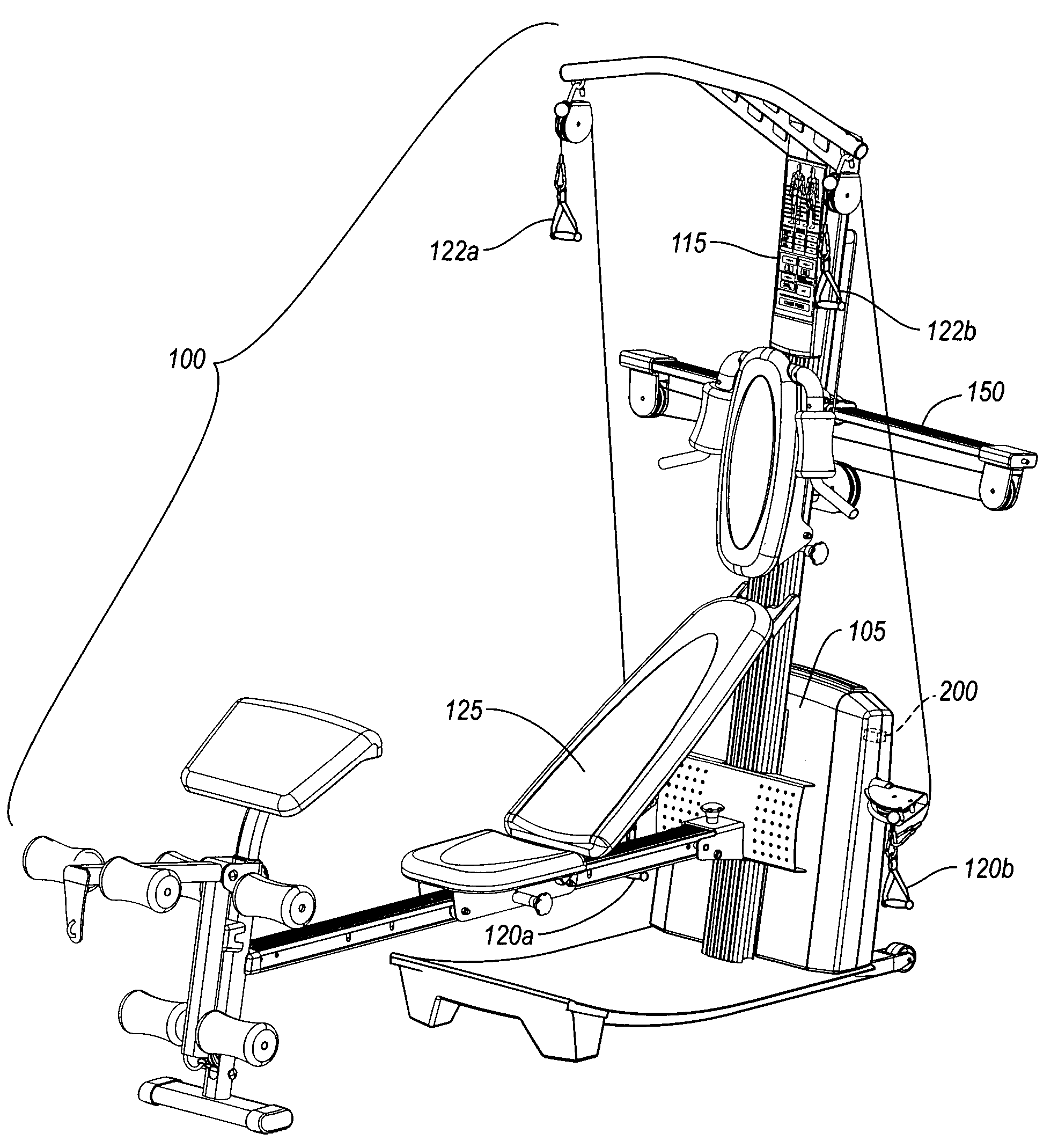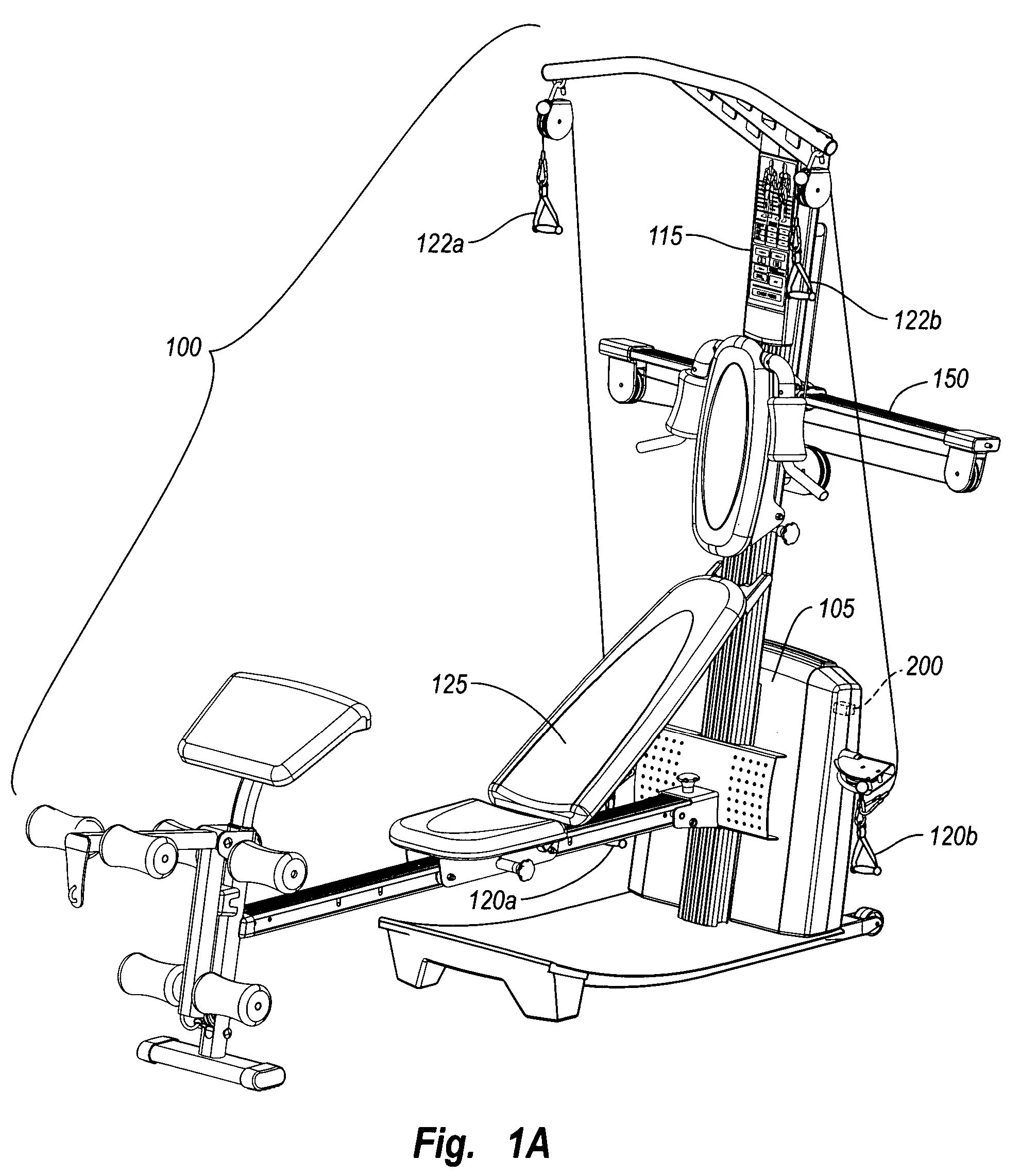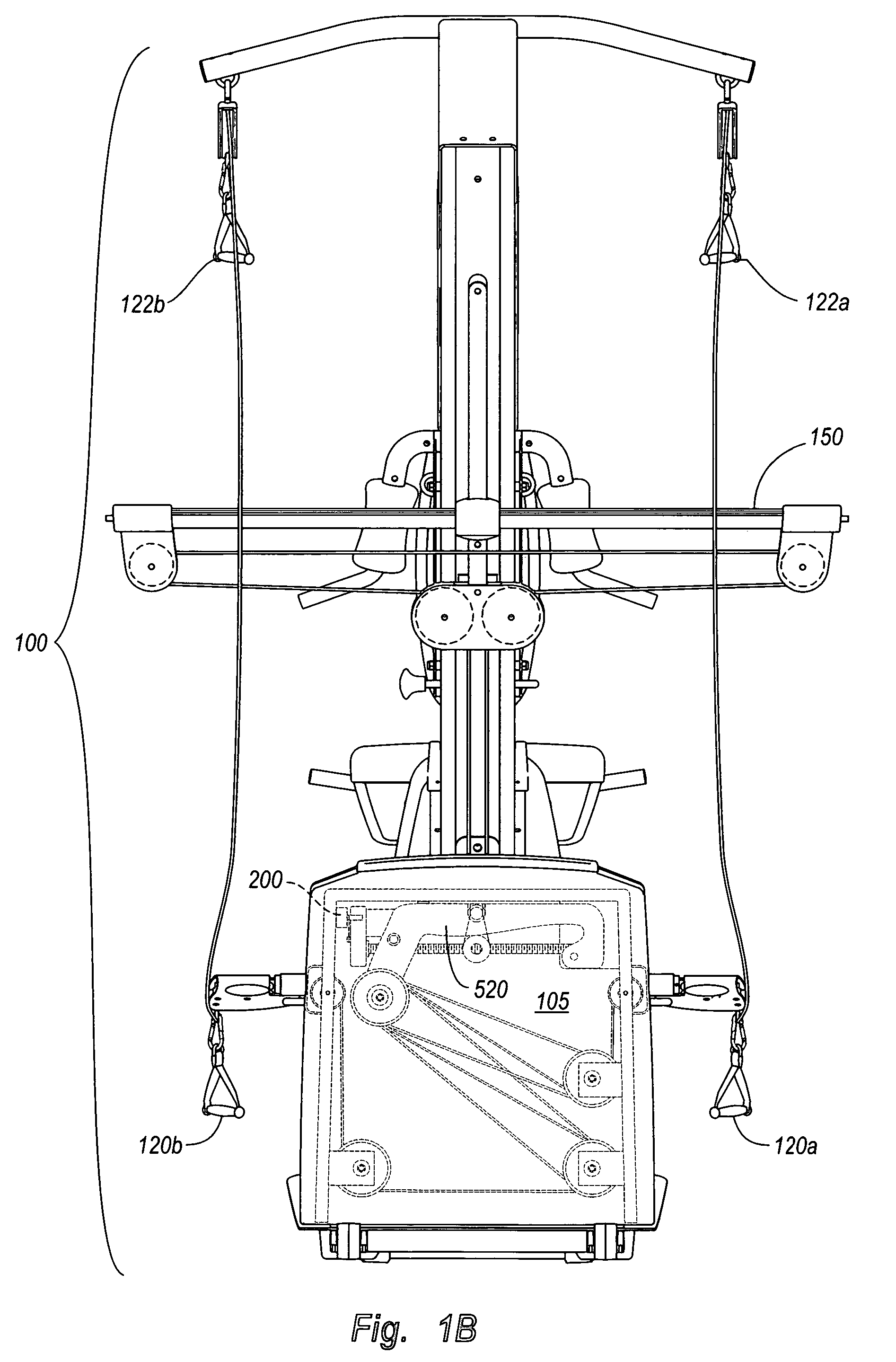Repetition sensor in exercise equipment
a repetition sensor and exercise equipment technology, applied in the field of repetition sensor in exercise equipment, can solve the problems of electrical monitoring, as described, primarily to aerobic exercise systems, and the normal suited of anaerobic devices to monitor these types of apparatuses, and achieve the effect of accurately monitoring short, detecting speed and/or distan
- Summary
- Abstract
- Description
- Claims
- Application Information
AI Technical Summary
Benefits of technology
Problems solved by technology
Method used
Image
Examples
Embodiment Construction
[0042]The present invention relates to a repetition sensor for use with an exercise device. In particular, the repetition sensor is sufficiently sensitive to accurately monitor short and / or inconsistent user repetitions, as well as detect long and / or consistent user repetitions. Furthermore, the repetition sensor can detect the speed and / or distance of the user's exercise movement.
[0043]According to one embodiment of the present invention, the repetition sensor includes (i) a frame; (ii) an electricity generator (e.g., an electricity generator) coupled to the frame; and (iii), a coupling portion (e.g., a ribbon, exercise cable, or a direct contact) for coupling the electricity generator to a moving component of the frame, wherein the electricity generator provides electricity (also referred to herein as an “electronic signal”) in response to exercise motion of the exercise device. The repetition sensor is coupled to a moving component of the exercise device allowing the repetition s...
PUM
 Login to View More
Login to View More Abstract
Description
Claims
Application Information
 Login to View More
Login to View More - R&D
- Intellectual Property
- Life Sciences
- Materials
- Tech Scout
- Unparalleled Data Quality
- Higher Quality Content
- 60% Fewer Hallucinations
Browse by: Latest US Patents, China's latest patents, Technical Efficacy Thesaurus, Application Domain, Technology Topic, Popular Technical Reports.
© 2025 PatSnap. All rights reserved.Legal|Privacy policy|Modern Slavery Act Transparency Statement|Sitemap|About US| Contact US: help@patsnap.com



